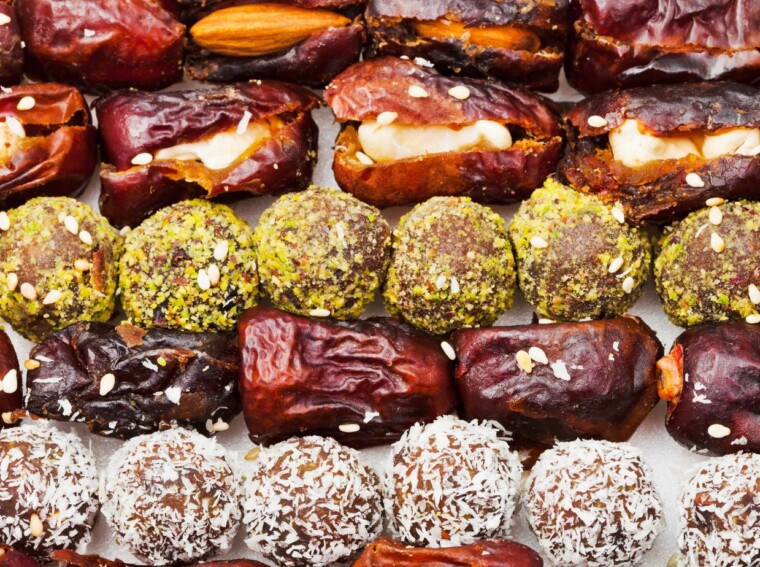Flavourful Armenian cuisine is organic, aromatic, and delicious. Be it melt-in-your-mouth dolma (stuffed grape leaves), filling Armenian stew (khashlama), grilled pork ribs (khorovats), or sweet biscuit-like cake (gata), Armenian food is a delight to both mouth and soul. In this article, we’ll look at the national Armenian cuisine and some must-try local dishes.
Amazing History And Culinary Diversity
The history of Armenian cuisine goes back thousands of years – culinary traditions in this country were formed more than 2000 years ago. The abundance of meat products on the table is explained by the early development of cattle breeding on the territory of the Armenian Plateau, as a result of which livestock and poultry became more diverse. In addition, cattle breeding gave rise to various milk products, especially jug brine cheeses and fermented milk products, which later became the basis for many national dishes. Due to farming traditions, Armenian cuisine is rich in cereals, beans, peas, and vegetables. Traditionally, Armenians cooked food on fire in clay ‘tandoor’ ovens.
The culinary techniques of Armenian cuisine seem rather complicated at first. A special complexity lies in preparing food from meat, fish, or vegetables, which are subsequently stuffed. Some recipes involve shredding meat and using it as a stuffing. Armenian food is very aromatic due to herbs and spices like mint, cilantro, basil, and cardamom. An amazing feature of Armenian cooking is the complete absence of fats for cooking. Almost all Armenian food is traditionally cooked with ghee butter. Armenian dishes are somewhat similar to the cooking of other Caucasian countries, but there are also significant differences.
Armenian Dishes To Try
Many people wonder what to cook and what to try to get to know Armenian traditions better. Here is an overview of the popular Armenian dishes.
Soups
Soup as the first dish is widespread everywhere, and the taste of any of the soups is remembered for a long time, especially if it is kololak, putuk, khashlama, or bozbash.

The basis for soup can be different, for example,e egg, and sour milk. If you travel through Armenia in summer, you should try refreshing cold Armenian soups like yogurt-based spas.
Meat
Recipes from meat are a symbol of Armenian cuisine. The most popular meat dishes in Armenia are khorovats (shish kebab), stuffed chicken (amish), meatballs (kufta), tjvjik (fried liver), dolma (grape leaves stuffed with meat and rice), manti (dumplings filled with meat, harissa (porridge with meat), and gouvaj (simmered lamb meat and vegetables).
Dairy products
They are served as an independent appetizer and as a condiment to other dishes. Cheeses prepared with various fillings and spices are especially revered.
Baked Goods
Armenian flatbread lavash is a traditional Armenian bread honored all over the world. Moreover, lavash is present at every feast; without it, Armenian cuisine wouldn’t exist. Another Armenian bread to try is matnakash.

By the way, lavash lasts a long time, and you can bring it back as a gastronomic souvenir after a visit to Armenia. Buy some air-dried beef slices (basturma), and eat them together at home. This organic snack can be a great alternative to a sandwich, pizza, or burger you eat when watching movies or playing Mason Slots.
Desserts
The most common sweet pastries in Armenia are cake gata and nazook cookies. Gata is an amazing multi-layered cake. You should soak all its layers in sugar and ghee butter when preparing it.
Drinks
Traditional non-alcoholic Armenian drinks are yogurt drink tan and Jermuk mineral water. After a rich feast, Armenians traditionally drink coffee (“soorj” in Armenian) made in special vessels called jezvas. Ararat brandy is one of the most popular Armenian alcoholic beverages. Locals even call it ‘cognac of the Caucasus’).
To touch the traditions of the cuisine of this wonderful country, you can make some of the traditional Armenian dishes at home. Of course, you can adapt the recipes to your local ingredients. For example, you may take pickled grape leaves instead of fresh ones for dolma.
Բարի ախորժակ (“Bari akhorzhak”, or “have a good meal” in Armenian)!


